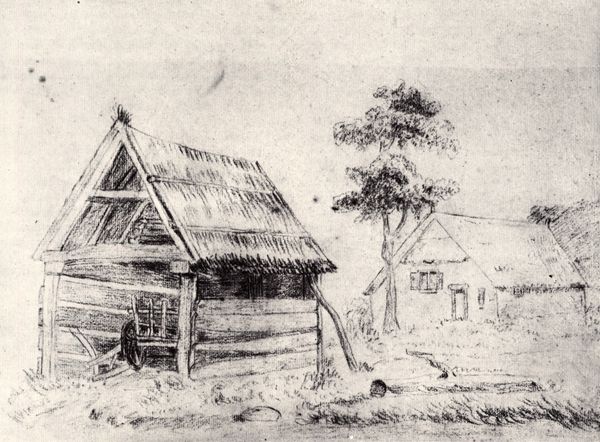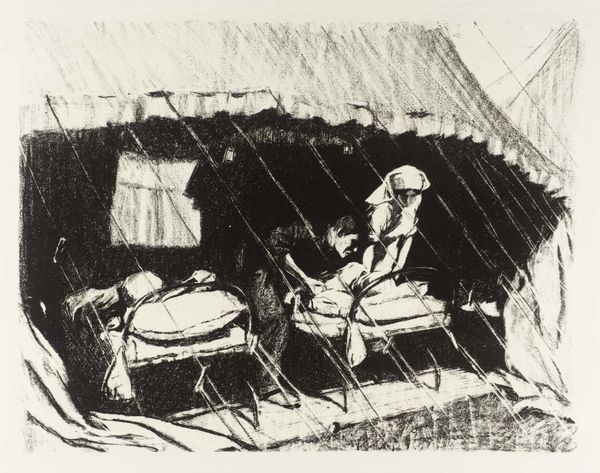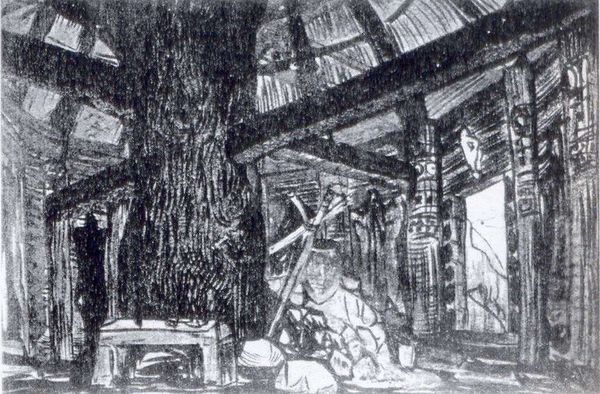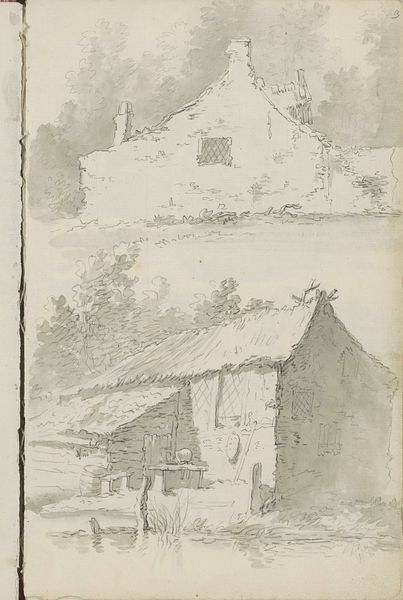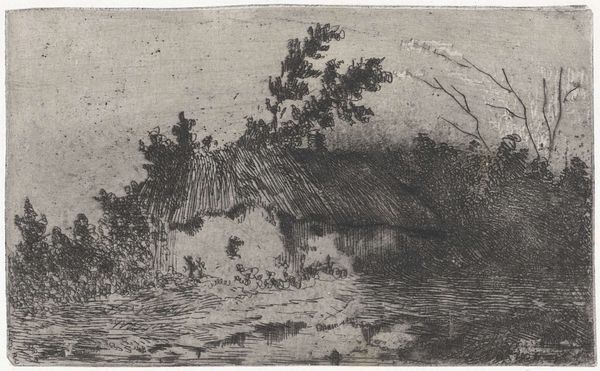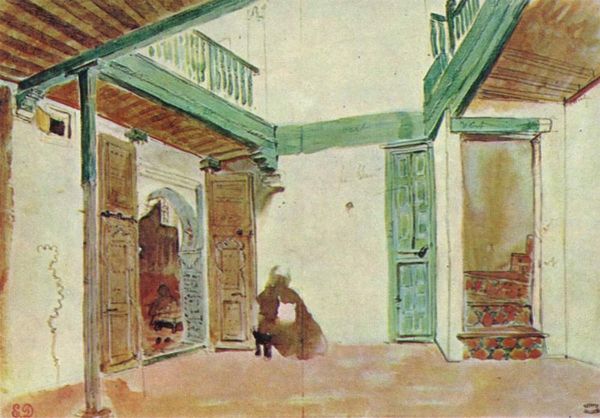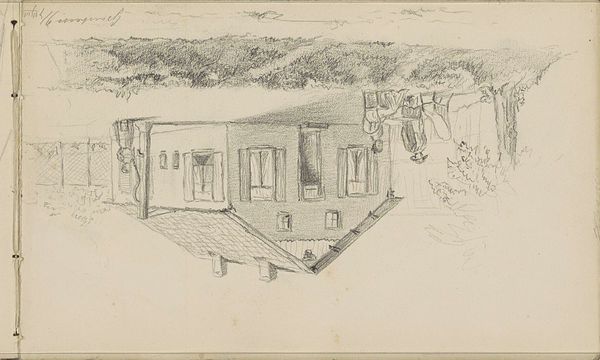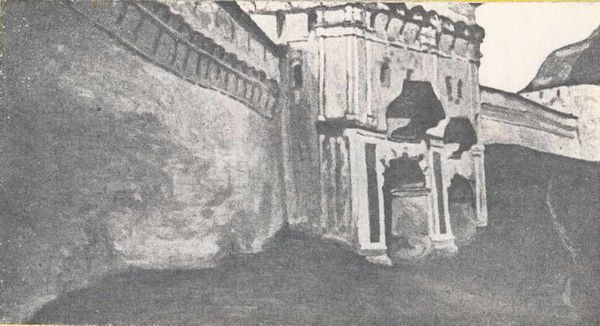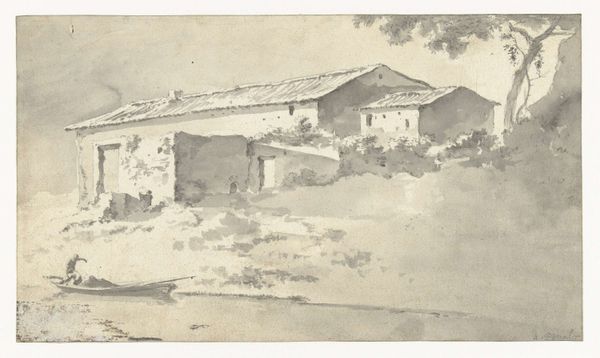
Copyright: Public domain
Nicholas Roerich created this artwork, "Porch of ancient wooden church in Ladoga", using graphic techniques. The image of a humble, weathered church porch invites reflection on the cultural role of religious institutions, particularly in early 20th century Russia. Roerich, a figure deeply invested in Russian history and spirituality, here presents a scene that seems to distill a sense of enduring tradition. We see a rustic structure, likely in the Ladoga region, a site of early Russian settlements. The choice of a wooden church speaks to the vernacular architectural traditions and deep-rooted Orthodox faith of the peasantry. In Tsarist Russia, the church was often seen as a pillar of social stability, yet also, at times, faced criticism for its wealth and power. Was Roerich making a conservative statement by celebrating this traditional image, or was he critiquing institutional power? As historians, we can look to archival materials, religious studies, and social histories to better understand this artwork. The meaning of art is contingent on social context and historical research.
Comments
No comments
Be the first to comment and join the conversation on the ultimate creative platform.
